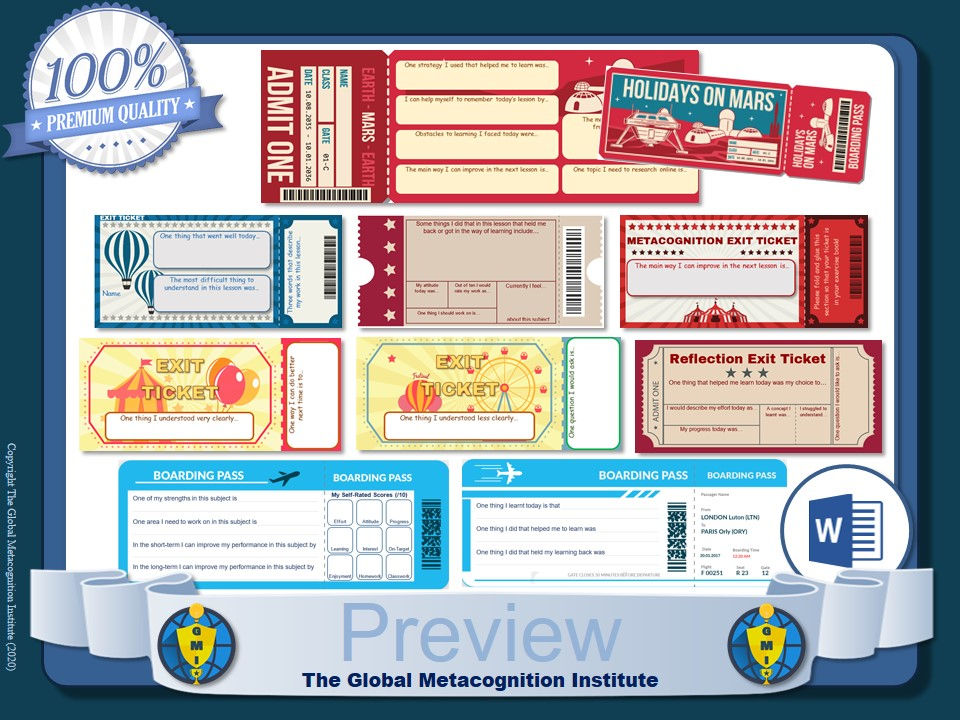Assessment is an integral part of the learning process, allowing teachers to monitor student progress and identify areas for improvement. However, assessments can also be stressful and anxiety-inducing for students, particularly when they are high-stakes or summative in nature. To help students approach assessments with a growth mindset and develop their metacognition and self-regulated learning skills, educators can use assessment wrappers as a formative assessment strategy.
Assessment wrappers are student reflection activities that are completed before and after a formative assessment. The purpose of assessment wrappers is to encourage students to reflect on their learning, identify their strengths and weaknesses, and set goals for future learning. By engaging in assessment wrappers, students can develop their metacognitive skills and become more aware of their learning process.
Assessment wrappers can take many forms, depending on the specific learning goals and the age and ability of the students. Some common types of assessment wrappers include:
Pre-assessment reflection: Before the assessment, students can complete a reflection activity that prompts them to think about their prior knowledge and skills related to the topic being assessed. This can help students activate their prior knowledge and prepare for the assessment.
Goal-setting: After the assessment, students can set goals for future learning based on their performance. This can help students identify areas for improvement and take ownership of their learning.
Self-assessment: Students can assess their own work and reflect on what they did well and what they could improve. This can help students develop self-regulated learning skills and become more independent learners.
Peer-assessment: Students can assess their peers' work and provide feedback on strengths and areas for improvement. This can help students develop their communication and collaboration skills and learn from each other.
Assessment wrappers can be used in any subject area and at any grade level. They can be completed in a variety of formats, including written reflections, discussions, and multimedia presentations. Assessment wrappers can also be used in conjunction with other formative assessment strategies, such as exit tickets, think-pair-share, and self-checks.
The benefits of using assessment wrappers are numerous. By engaging in reflection activities before and after formative assessments, students can become more aware of their learning process, develop their metacognition and self-regulated learning skills, and become more independent learners. Assessment wrappers can also help reduce test anxiety and encourage a growth mindset, as students are encouraged to view assessments as opportunities for learning and growth rather than as measures of their intelligence or ability.
In conclusion, assessment wrappers are a valuable formative assessment strategy that can help boost student attainment, metacognition, and self-regulated learning. By engaging in reflection activities before and after formative assessments, students can become more aware of their learning process and take ownership of their learning. As educators, we can use assessment wrappers to create a more student-centered learning environment and encourage a growth mindset among our students.
We've released two assessment wrapper resources that will help you to implement this metacognitive strategy: printable assessment wrapper worksheets and a 'virtual assessment wrapper'. The printable assessment wrapper worksheets are a great way to make metacognitive work more visible and to track progress when it comes to metacognitive awareness; the virtual lesson wrapper is ideal for teachers who wish to save on printing costs.

Advice, Tips & Tricks for Using Assessment Wrappers for Boosting Metacognition
Here are some tips, tricks, and advice for using assessment wrappers with students during formative assessment work:
Start with clear learning objectives: Before introducing assessment wrappers, ensure that students understand the learning objectives of the assessment. This will help them to focus their reflection and goal-setting activities on the specific skills or knowledge they need to master.
Use a variety of formats: Assessment wrappers can take many different formats, including worksheets, online tools, or even in-person discussions. Consider what format might work best for your students and the specific assessment task, and be open to trying new formats if something isn't working.
Scaffold the reflection process: For students who may be new to metacognitive thinking or self-regulated learning, scaffolding the reflection process can be helpful. Provide guiding questions or prompts to help students focus their reflection, and model the process of goal-setting and reflection.
Encourage honesty and self-reflection: It can be challenging for students to honestly assess their own learning, particularly if they have struggled in the past. Encourage students to be honest and reflective in their assessment wrappers, and remind them that identifying areas for improvement is a necessary part of the learning process.
Provide feedback: Assessment wrappers are most effective when students receive feedback on their reflections and goal-setting activities. Use this feedback as an opportunity to reinforce positive behaviours and encourage continued growth and development.
Use assessment wrappers throughout the learning process: Assessment wrappers are most effective when they are used regularly throughout the learning process, not just before and after summative assessments. Consider incorporating assessment wrappers into homework assignments, class activities, or other formative assessments to reinforce metacognitive thinking and self-regulated learning.
Celebrate progress and growth: Finally, it's important to celebrate students' progress and growth as they engage in metacognitive thinking and self-regulated learning. Highlight examples of student success, provide positive feedback on assessment wrappers, and celebrate milestones and achievements along the way.
Assessment wrappers are a powerful tool for promoting metacognition and self-regulated learning in students during formative assessment work. By starting with clear learning objectives, using a variety of formats, scaffolding the reflection process, encouraging honesty and self-reflection, providing feedback, using assessment wrappers throughout the learning process, and celebrating progress and growth, teachers can help students to develop essential skills for lifelong learning and academic success.















































Comments